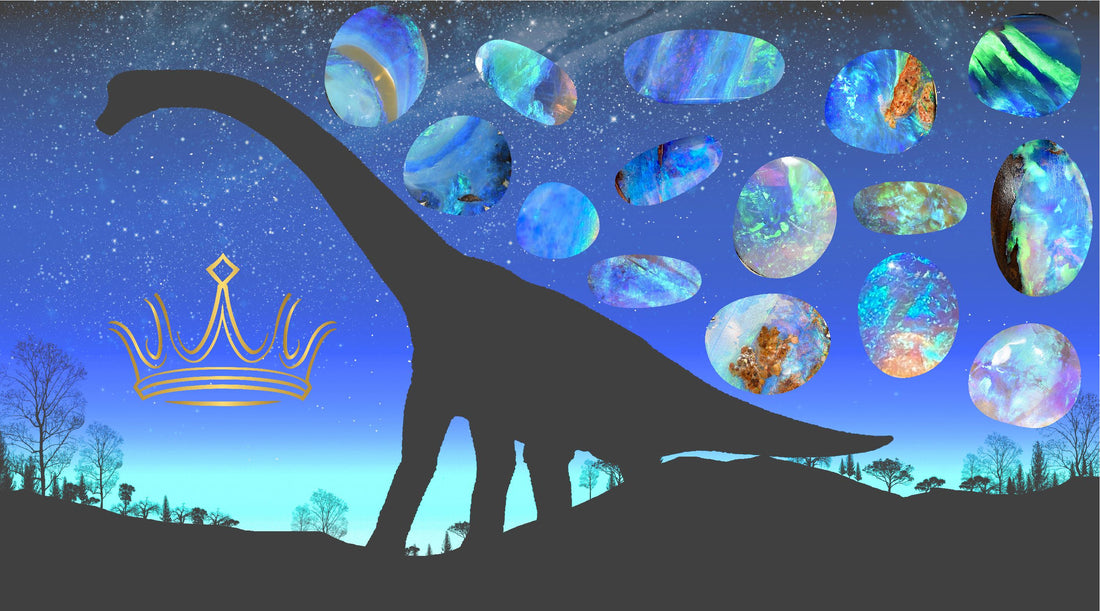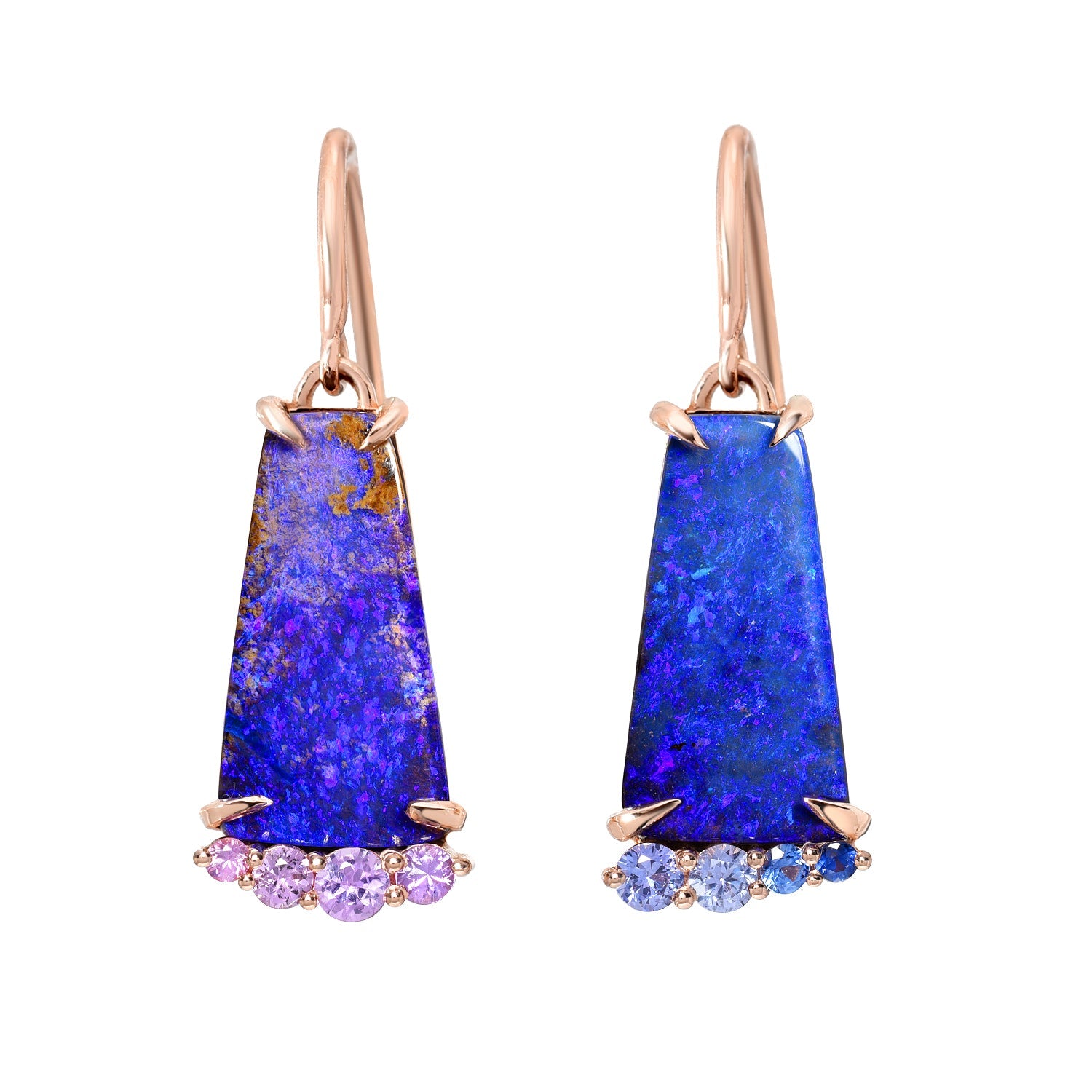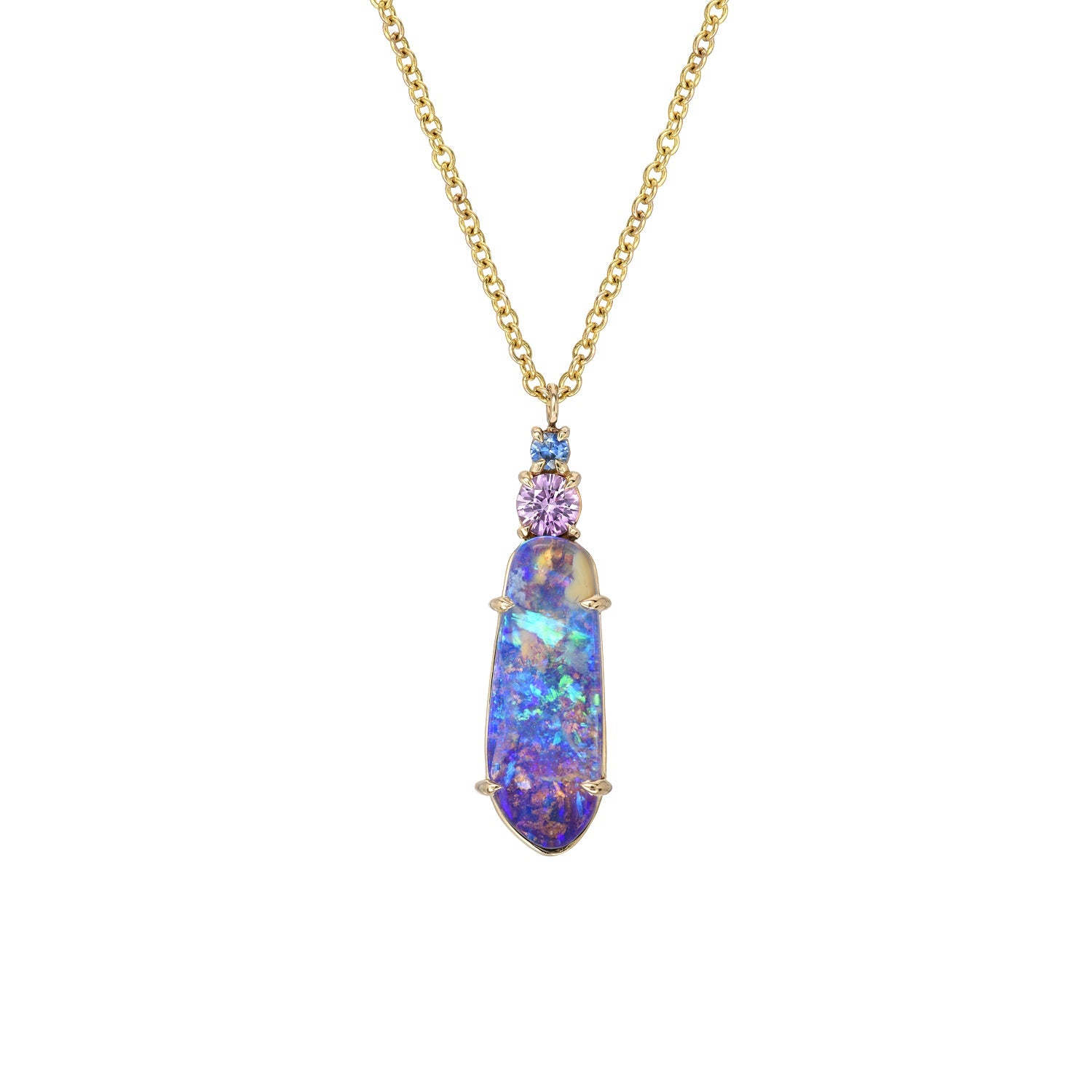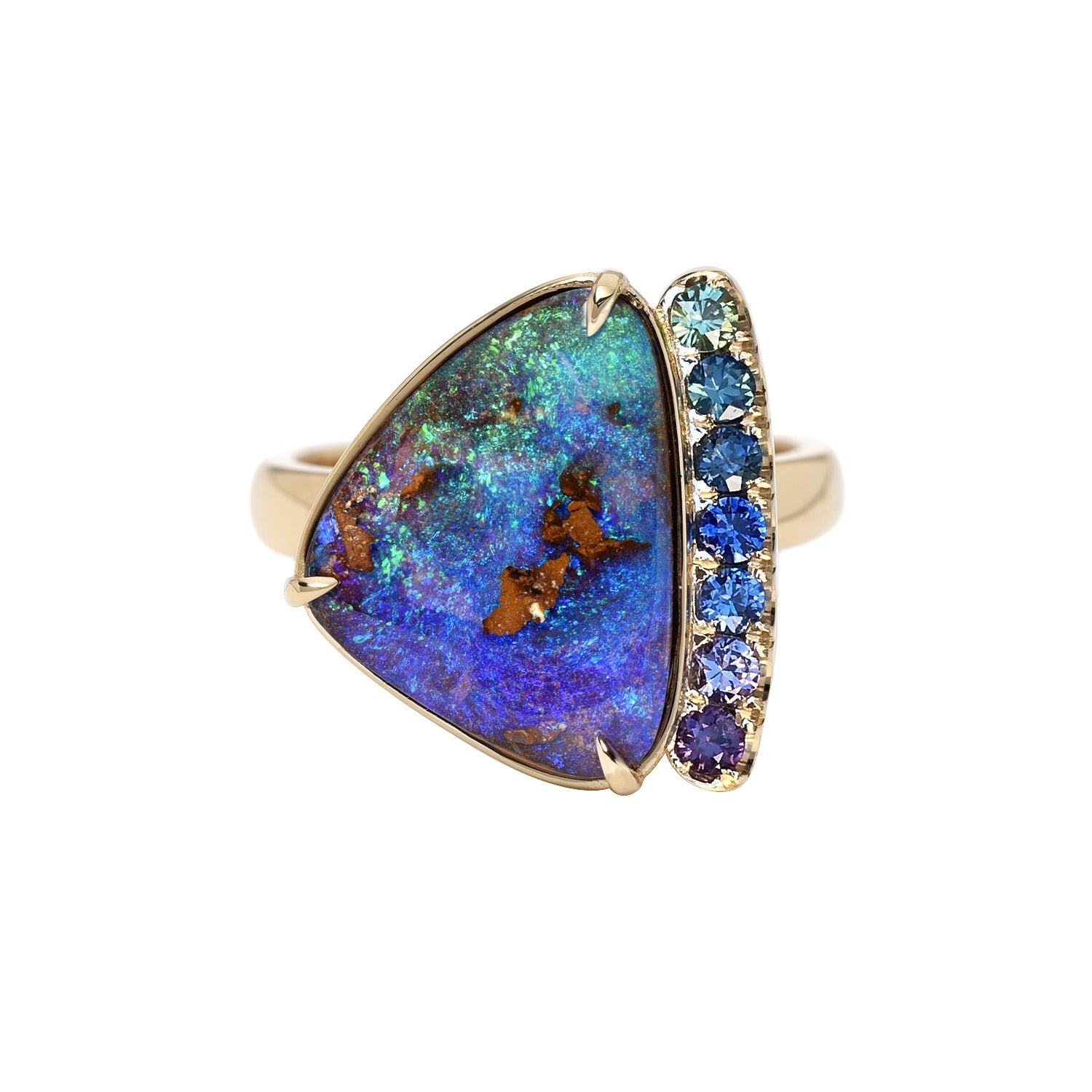
Australian Opals; From Dinosaurs To The Crown
luis gomezShare
Opals, unlike other gemstones, are rife with an intangible quality — something you can’t quite put your finger on. Full of mystery, bubbling with kaleidoscopic colors, brimming with their own type of personality. They are each unique, each one-of-a-kind, each spins its own tale. Each Opal has something to convey; its own inimitable story, distinct from the stories of every other Opal. And so much of that awe is due to where they come from. In today’s article, we’re going to slip back in time to the era of dinosaurs. Then we’ll leap forward to frontier towns and crime-infested mining communities. We’ll take a detour into the world of British royalty, and finally land in the present. This time warp will weave together a story of geology, human behavior, and fantastic circumstance that results in the rainbow hued gemstone we know as Opal. Today, we’re going to talk about Opals in Australia and why their place of origin is such a pivotal factor in their identity.
Opals of Australia — The Era of the Dinosaurs
Most Opals, about 95% of them, come from Australia. Not only that, but the most valued and most sought after Opals, Black Opals, are mined on that continent. There’s a reason why Australia has had such good fortune cornering the market when it comes to Opals. Why year in year out some of the most valued and legendary pieces, like the priceless Black Prince, have come from this region.
Australia, long before it was established as a penal colony, long before there were aborigines, and before it was even a continent, was an inland sea. This huge plain of land was regularly engulfed by the surf.
Between 146-65 million years ago, during the Cretaceous period, Australia was a region full of minerals, a sea bustling with corals, (inspiring this Australian Pipe Opal Necklace held in place by a golden coral reef)

Great Barrier Reef Opal Necklace
and home to magnificent prehistoric animals. It was a place where megalodons dwelled. During this period, the water ebbed and flowed. For 100s of years, what would eventually be called Australia was essentially a swimming pool to gigantic predators. But after some time, those marine life sustaining pools would dry out with evolution favoring land living creatures - most notably, the formidable dinosaurs. This was the circle of life.
Yet more transformation was yet to come, and it commenced as a series of geological changes began to affect the area. Volcanos, tectonic plate movements, climate change, etc. The waters that had gradually receded, and this time stayed out of inland Australia, had left in their place huge deposits of rich marine soil — a “soup” of sorts, full of silica, fossils, and other valuable resources, that became the main nutrients of Opals. All the “soup” began to seep into the land, through voids, cracks, and tiny fissures. Like a sponge, the continent soaked it all in. After 5 million years of the perfect merger of circumstances, Australia was left with a 1cm thick deposit of Opal. The land pressure cooked that river of Opal stew and molded it into the gemstone we mine today.
What’s so extraordinary about these gemstones, and why Opals are mostly found in Australia, is that (in a way unlike other stones) their quality is siphoned from and given to them by that fossil-rich soil — and by those dead dinos.
Australia Opals — Mining towns
Up until the late 19th century, Opals were incredibly hard to come by. So hard that they were even more precious than gold, silver, and rubies. Monarchs, Sultans, and Emperors would fight wars over them. Mistresses and princesses would cheat on their husbands, forsake their kingdoms and turn their backs on Rome for Opals. The multi-colored gems were a hot commodity. Shakespeare called them the “mother of gemstones” and there was a reason for it - Opals really were the crowning jewel of, well, any crown.
If you desired an Opal, you had to go where few men dared. Out into the wilderness, out of the arms of Rome, of the empire, and breach the savage land. It took fortitude.
That all changed in the 1840s. A German geologist was doing a walkabout near the small town of Angaston, Australia. His name was Johannes Menge, and he was studying Australia’s bizarre formations and strange geographic geometries. Johannes inadvertently stumbled upon a treasure trove - a small collective of Opals. Nonetheless, he wasn’t much for fanfare and he wasn’t driven by money. So he shared his discovery with a few of his friends and then left the area alone. His friends subsequently set up a small mining community and started transporting Opals out of the region, aiming to keep their operation quiet to mitigate competition. Well, like Ben Franklin said: “three may keep a secret, only if two of them are dead.”

In less than 20 years, miners had stripped the land dry. The government initially thought it was a fluke deposit, but the miners, hungry for a new revenue stream, started to dig all over Australia. As the years passed, other deposits, like Lightning Ridge, were uncovered. Prospectors began to create shantytowns; sizable hamlets that formed overnight, full of bars, ruffians, criminals, prostitutes, outspoken preachers, etc. The area, for years, was basically steamrolled by this “gold rush” — and what’s even more amazing, each time prospectors would suck the land dry, some new deposit would appear a little ways off. Turns out Australia was an Opal gold mine, so to speak. The government finally interceded, in the early 1900s and began to oversee the operation.
The Crown and Australian Opal
On January 1st, 1901, Australia became a nation. It was now just partly a British Colony. It became an integral member of the Federation of Colonies of the pacific. This meant that Australia was a nation with constitutional ties to the United Kingdom, but one that now allowed its previously six individual colonies to merge into one united nation.

It can hardly be a coincidence, that for years, the crown, due in part to their relationship with Australia, became fascinated with Opals. Opals were the rage in London due to this torrid love affair. This courtship generated a feedback loop; Europeans wanted more Opal, because their monarchs were wearing them, and Australian miners had to work to meet the demand for the precious stone.
Suddenly, Opals were jet-setting items.
Opals in Australia today
What makes Opals in Australia, in the present day, such hot-ticket items? Well, certainly their exceptional range of colors and patterns. But their beauty aside, there is the fact that the government oversees every aspect of mining and production. So when you invest in a piece of Australian Opal jewelry, you can feel confident in the conflict-free origins and mining of the stone. And when you work with an experienced Opal jeweler, they understand how to assess these incredible stones and determine the right type of setting to best display their magic.
Here at NIXIN Jewelry, we strive to source some of the most unusually breathtaking Opals of Australia … and then we craft our pieces around each unique stone.
NIXIN Jewelry offers a collection of handcrafted Australian opal rings, opal necklaces, opal bracelets and opal earrings in an array of sizes and styles. Ready to ship opal jewelry and jewelry cleaner also available.



